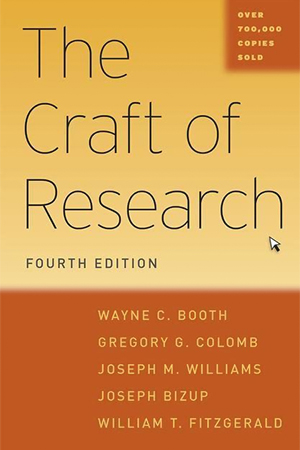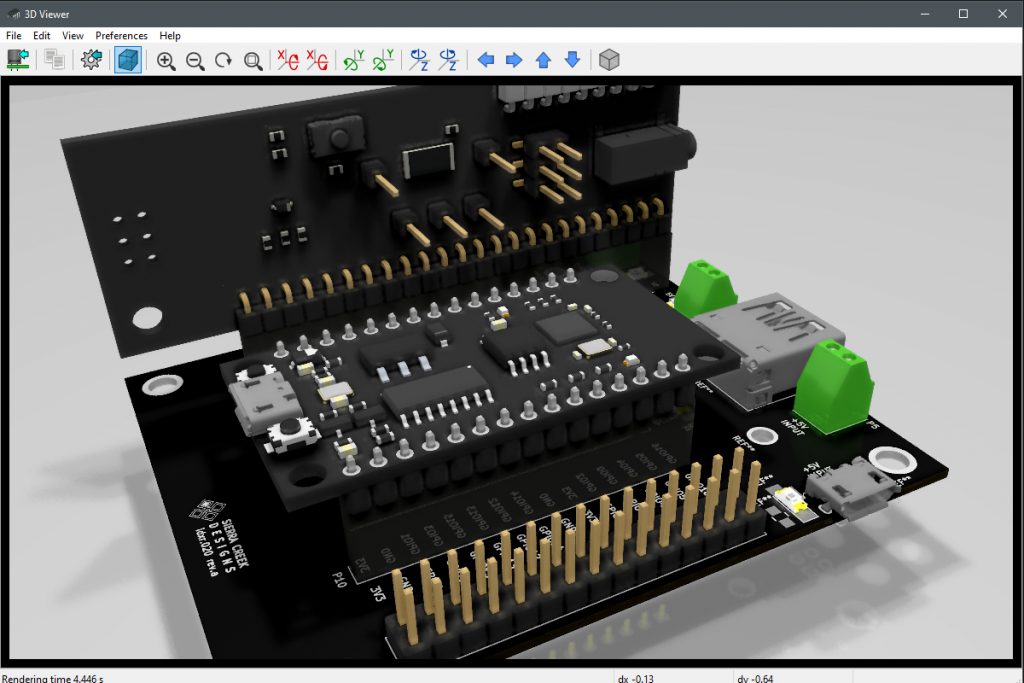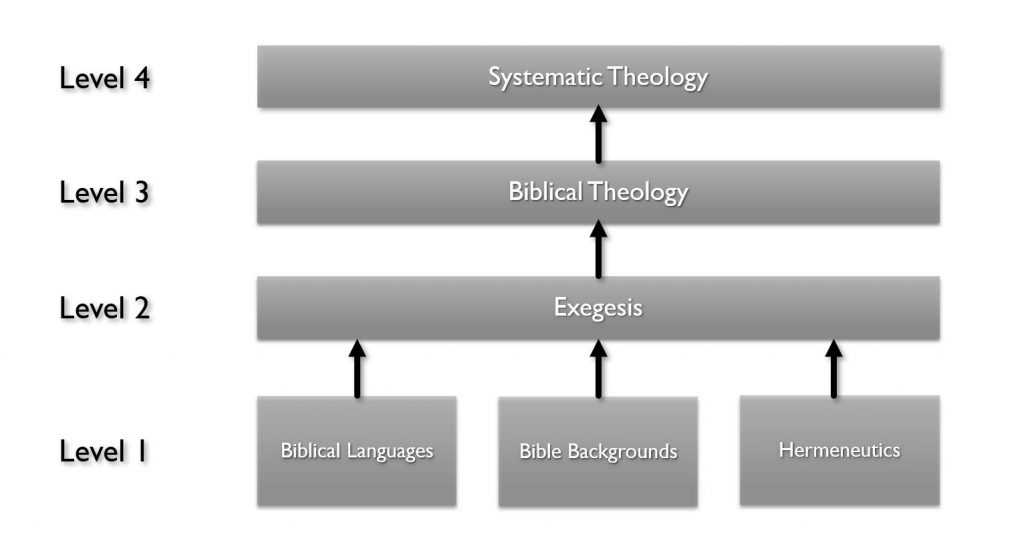There are several parts to this book, and within them, numerous chapters span across topics that the authors wrote to help researchers write papers for academic interest and to produce written work of literary significance. In addition to carefully reading through the material of each chapter, it is necessary to zoom out and view the material and the intended purpose of the entire body of work to understand the authors’ point. The methods and techniques given are broadly relevant to academics and researchers who wish to organize, substantiate, and bring together material in a formatted way according to conventional standards and expectations.
While the read subject matter is understood and of pertinent interest, the following book review is given here to demonstrate the reading was completed as an acknowledgment of the material written to guide students in projects or their coursework.
Through my reading of the book, I’ve highlighted numerous areas with notes about what the authors meant about research to begin. The definition of research is explored with a discussion about its types, what it is to conduct research, and how to understand it as a process. The method of research isn’t mechanistic but organic, as it’s a process that isn’t linear but iterative. At least in terms of how sources are collected, read, and understood. And how data is organized to support assertions and conclusions.
Research makes its way into various kinds of writing. The numerous types are given at length, from short essays to Ph.D./Th.D. dissertations, with many more in between. It is helpful to recognize what authors clearly define or share as academic writing types, but it would be of further interest to see examples of those types and their length ranges. For example, the authors wrote that a book review is a short paper (1-4 pages), but I have written various book reviews that go well beyond that as I trace historical backgrounds, citations, and source materials.
The authors try to inform readers that research is not biased, emotional, or charged with loaded terms for dramatic effect. Research for theology students is not a sermon. Research is not embellished and makes use of neutral terms. Assuming the authors mean that terms chosen to convey meaning are gender-neutral, what material is written, and how it is presented. Generally, intentional or not, I believe there is no such thing as a complete absence of bias. While research should be derived from data, not information, sometimes that isn’t possible.
As the authors further wrote about the value of research, they listed the apparent favorable outcomes of problem-solving capacity, character development, and writing skill improvement, there are other research merits as well.
The seven steps to performing biblical exegesis are reminiscent of the hermeneutics coursework completed earlier in the program. With a lot of attention toward the resource types, readers are informed about concordances, dictionaries, atlases, software, commentaries, apparatuses, and the like. What’s especially useful is step (6) about how to establish the original theological meaning of the text under study. As this is a critical step to understand and follow, it is not appropriate to apply an interpretation developed and understood, but make certain the original meaning is understood and accepted even if contradictory to denominational interests, tradition, or popular reading.
It is especially beneficial to follow the outline structure given in this section. Categorical separation of key facts surrounding the interpretive work of a paper support conclusions and applications with ease of acceptance or push-back. This is the best outline I’ve seen of an exegetical presentation, as it covers relevant areas of interest. In fact, to serve as a template, it is repeatable for indexing, tagging, and retrieval.
This chapter’s primary points of interest concern the use of primary and secondary sources, theological analysis, and historiography during the course of research. Distinctions between primary and secondary sources are essential to understand as they pertain to the historical origination of the material. Primary sources closest to the origin serve as the highest documentary evidence as rationale or justification for material gathered and processed for research. Primary source materials come in many forms.
While secondary sources are generally one step removed from the source, they can reference primary sources that may no longer exist. These are source materials that include discussions and commentaries about primary material. There are numerous examples of secondary sources from many resource types (e.g., articles, monographs, reference works, testimonies, inscriptions, historical records, and so forth).
The authors clearly explain that the objective of theological research is to “document an orderly and coherent account of theistic beliefs.” Furthermore, Biblical Theology concerns topics derived from Scripture to further narrow macro or micro exegetical forms of literary research that concern theology students. Conversely, there are theological comparison studies that help researchers understand the historical positions of theologians.
The authors close the chapter by touching upon historiography and pastoral theology to indicate their types as having a bearing on how materials are analyzed, collated, and applied. The guidance about historical events, theology, and people together is helpful to scope time intervals and select figures by available materials. If it isn’t possible to focus on an individual during a theological course of study, it is helpful to redirect concentration to an institution.
The overall gist of choosing a topic rests on reading the relevant subject matter and asking content and feasibility questions about the material. Once the topic is chosen, the task then turns to limiting the scope and depth of the research project. Setting parameters in advance is necessary to accomplish research objectives within a defined period of time. The book’s authors lead readers to understand the differences between undergraduate, graduate, and post-graduate research in terms of breadth and coverage of the subject matter.
There are basic steps offered to plan for the research undertaken. They together contribute to how a research project is proposed. Before outlining the elements of a proposal, it is first necessary to define the problem to resolve. Once it is determined what problem exists, what question is unanswered, or what gap in knowledge there is, it is then necessary to determine the research project’s purpose. For example, an analysis of a matter or event could be pursued to develop an understanding of a specific topic. The range of possibilities here is enormous, so determining the research project’s purpose is a necessary step to keep focus and remain within the boundaries established as the paper sets about resolving the problem. Finally, it is advised to design a methodology concerning the assembly and delivery of the research. By the examples given in the book and the final paragraph in this section (page 150), the author suggests that methodological reasoning should be deductive rather than inductive or abductive.
The proposal area developed here is very helpful for organizational effort, too. By beginning with the end in mind, the various elements of the proposal point to what effort and resources contribute to a successful outcome. The explanatory strength of each proposal area is of significant help in the preparation of the overall project. All three steps in the planning process also support the outline to build the paper’s body as it develops. The outline structure that guides the writing and interfacing elements of the subject matter enables coherent thought throughout the reading of the entire project. It is always best to use a conventional outlining format according to the institution’s guidelines where the research is conducted (if one should exist).
A further area of significant interest is the researcher’s library access and use. Whether institutional, municipal, regional, personal, or some mixture, efficient information mining and retrieval are necessary to produce a research paper. While the book has much to say about using physical hard copy books, that is a vital area of interest. However, too often, meta-data and the parsing of narrative verbiage within the body of such content don’t exist. From the book, it is clear that libraries have a lot of digitized subject matter available in databases. Still, when it comes to EBSCO or Atla Religion for journals and historical research papers, those two might be among the more prominent libraries and wouldn’t be found among municipal or community libraries. Universities and Seminaries often contract or subscribe to both for students and alumni. Master’s University provides both for its students, and they significantly help with assignments, research projects, and overall spiritual development. Master’s University does not provide access to EBSCO and Atla Religion databases for alumni. As I don’t live near a library that carries access to either, a few years ago, it was necessary to begin building a personal digital library as a permanent download via purchase and licensing. After continuous persistence, a personal library has grown to over 30,000 titles, mostly purchased (except for journals, which are a low-grade subscription to everything common to EBSCO and Atla Religion.
The purpose is not to hoard but to establish a framework to which retrieval of data and information is made feasible by materials derived and indexed from numerous locations (historiographical, literary, academic, and biblically sound institutions). To run logic or boolean operators upon parsed data, whether tagged or not, yields a canvas of weighted results that help save time, minimize cost, and filter what’s most meaningful or relevant. It also becomes more readily possible to retire what becomes outdated. With subscriptions and outright digitized copies of scanned texts, it is better to gather, collate, and index for speedy retrieval everything written as scanned into the record (such as popular patristics, puritans, theologians, and philosophers down through the centuries). It is too inefficient to return to the days of exclusively working through hardcopy texts to complete a research project or even a robust intertextual bible study on a given point of interest. ProQuest is an institutional-only access database for theses and dissertations, so it will not be possible or of interest to begin seeking its value for research ahead. PQDT is now ProQuest and no longer an open-source application for use. Access to theses and dissertations is an exclusive service to academics or anyone with a library that hosts ProQuest.
The authors of this book take a well-spent time to cover the basics of reading. And how to take notes on that reading. There are helpful tips about what applications to use for various circumstances and purposes, whether notes are taken manually or via computer. For example, a “Word Processor,” “Database,” and “Spreadsheet” are the types of applications that the authors identify as helpful and common among researchers. This review is written with a Word Processor. The subject matter covered here is really very basic. Further discussion is offered about life balance around studying and reading, such as rest and physical exercise.
While the book covers specific details about how to format bibliographical data and citation references in Turabian or other styles, not all academic institutions accept the book’s guidance in each area of character, terminology, or registration. The book provides general guidelines for using Turabian, but individual mileage may vary from institution to institution that requires Turabian.
The book extends further into the composition of the research paper. It covers familiar ground as graduate students have already learned how to form sentences with independent and dependent clauses, appropriate grammar, and punctuation to communicate meaning within the structure of a paragraph. Transitional terms, phrases, and sentences within paragraphs, or as ideas and subject matter, that flow from one paragraph to another, readers can track through in a coherent way to arrive at an understanding the writer wants. The book’s authors make a compelling case for the need to research English and learn from examples that help both experienced and novice writers. When the writing process of a research paper begins, the applied craft of composition takes shape. From the author’s experience, there are numerous valuable points to consider during the editing and revision process of the paper. The caliber of their guidance makes clear that the writer of a research project should have mastery of the written English language to set it apart from other literary genres. That is to say, according to the authors, it is not enough to be well-developed in terms of research, analysis, investigation, reconstruction, and the derivation of biblical, historical, and philosophical truth, but the capability and fluency of writing at the same caliber is expected. Time and energy spent on biblical and theological research should be matched by how that research is written.
As this text serves as a reference handbook, it is a go-to resource for handling the parts of a research paper when laying it out in an organized manner. The various elements expected in the research paper are covered to show effective placement and orientation for readability and interpretation. To Turabian style, proportionality, and other parts of the paper, the initial pages, introduction, main body, summary, conclusions, appendixes, and bibliography are covered to reinforce further adherence to the document standard for uniformity of research papers developed and formatted to convention for the benefit of readers and institutions.
Chapters 18, 19, 21, and 22 of Quality Research Papers: For Students of Religion and Theology, Fourth Edition together amount to 53 pages of reading that this short paper summarizes. The sections concerning these chapters are about the structure and substance of a research paper. More specifically, the range of topics covered includes the necessary elements of a research paper. Namely, this concerns the paper’s documentation, statistics, tables, graphs, footnotes, bibliography, the Turabian standard of citations, and styling of various literary and media materials. The subject matter ranges in substance to aid the research writer in preparing and presenting the material. The book largely serves as a narrative guide with explanatory value and a handbook for continued reference.
As the author prepares the subject matter for the layout and construction of the research paper, it is organized by relevant sections of interest around types and categories. All four areas of the paper’s development touch on common points of reference to guide a reader through the text of the paper. Including annotations, visual aids, quantitative illustrations, and sources accompanying the researcher’s text body, each area addresses a paper’s segments or components to conventional standards for conformity to the expected readership style.
Various examples are presented about referencing notes and formatting them throughout a paper for retrieval, source verification, and further research. Beginning with supporting documentation declared within the research paper. As notes are produced within a paper from authors of primary, secondary, or tertiary sources, those sources to substantiate those notes are cited or quoted by necessity. The way to do that is given with the rationale concerning the use of source materials, along with examples to format them properly. Footnotes, or endnotes, that specify cited source references follow conventional standards (Turabian) requirements for consistent readability. With each source reference cited alongside the various others within a paper, they together form a coherent means of support of what the research author conveys among various points made.
Of considerable clarity, beyond citing sources using reference notes in a consistent format, is the proper way of producing second and later references. The correct way of using abbreviations that are succeeding citations involving the Ibid term is especially helpful. Moreover, Bible versions and the use of translations with changes as exceptions are understood by the research student to follow for continuity and thorough use consistent within a paper. Furthermore, content notes that consist of explanatory messages are of significant utility. The proper method and format of those notes given by examples enable the writer to augment the paper without disrupting the research flow and narrative.
As the book’s author turns attention to statistics, tables, and graphs, there are various topics centered on quantitative reasoning in which calculations make a point in support of the research project. The range of coverage on the topic is wide enough for what a research paper would convey for purposes of analytical comprehension. Numerical and visual representation of calculated probabilities, standard deviation, averages, median values, frequency, weight, and distribution further reinforces an understanding of claims or assertions about a matter of interest. For example, demographics, population samples, tendencies, and correlation are focal areas of conclusive interest from data collected and presented compellingly through statistics.
While the focal area of reading does not include chapter twenty, there are various additional aids given about how to format the pages of a paper’s text body. Further guidance about page numbering, titles, headings, and preliminary pages is also covered in useful detail. The basics about proper spelling, punctuation, and grammatical concerns are discussed as expected, but with respect to a research paper unique to various different forms of writing. Additional details about footnotes and quotations aside from the previously presented details and examples are relative to their placement, when to use them, their methodology of inclusion, and their considerations.
As researchers encounter various source materials, the authors of this book present an exhaustive range of examples, both Footnote and Bibliography style and Author-Date style. Writers of their papers use these as examples from either parent category of citations. As such, this section serves as a handbook for placing citations according to source type. Rather than prepare rationale or guidelines for producing cited references according to source author, periodicals, monographs, commentaries, general books, specialized books, or unpublished materials, meticulous detail is given as examples. Numerous explanatory notes accompany those examples, but they have less instructional value as a comparison. Among the many examples interspersed throughout source categories, alternate formats are also given.
Among both examples by group, the examples mechanistically indicate where source names, titles, dates, locations, page numbers, and more are placed on a research paper with consistency. Writers must use one type or another depending on the institution, convention, journal, or agency requirements. Accordingly, citation designations have general rules and guidelines with numerous exceptions fluent with an editor very adept and all the particular source reference entries. The format and elements within a citation vary widely by source type (whether published or unpublished materials), whether as a note, second note, or bibliography entry.
Overall, across four major book sections, the authors took meticulous care to walk readers through what research is and what it involves. With copious details about biblical and theological research, there are many clarifying details about what the practice of research is with appropriate definitions. How readers or students conduct research is not just about methods of analysis and conclusions drawn internally by the researcher. The analysis, writing, formation, and presentation of discoveries, propositions, claims, arguments, and warrants constitute the integral nature of a research project. More meaningfully, research completed around biblical and theological interests leads readers and researchers together toward application-oriented learning and pastoral theology that informs individuals in ministry who love and serve people. Any effort to conduct research for the sole purpose of learning itself is an empty endeavor. Research should be for the edification of the church or individual or to challenge, educate, and inform people to love and do good works (Hebrews 10:24).
The further historical and literary value of analysis in support of research (as guided by this book) is constructed and presented so that the subject matter doesn’t just serve the academy or institution but people overall from the researcher’s contribution. So this book is a standing reference for what, how, and why research is done to write about biblical, theological, historiographical, or literary subjects with the necessary convention and format elements necessary to reach people with credible and lasting interest. As topics selected and researched carry practical value, it is also a fruit of labor that supports personal growth, the growth, knowledge, and development of others, and a form of worship that glorifies God. Research inclusive of written materials has lasting meaning, purpose, and value for faith and practice. It contributes to a larger ongoing conversation about what it means to love God and others well.





















